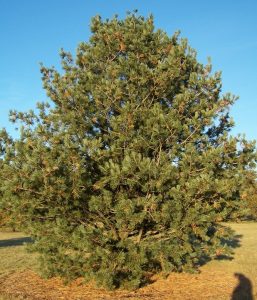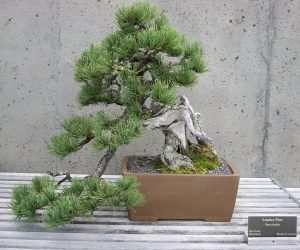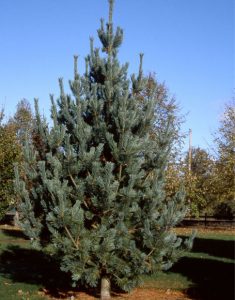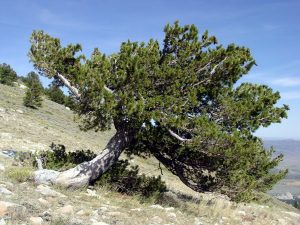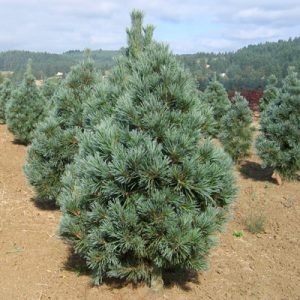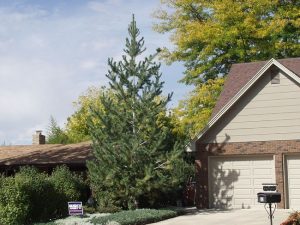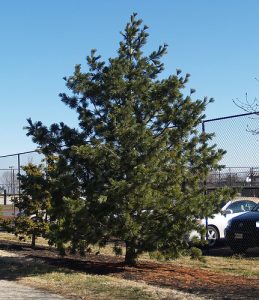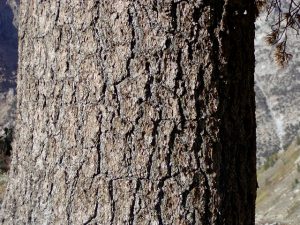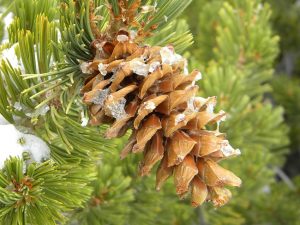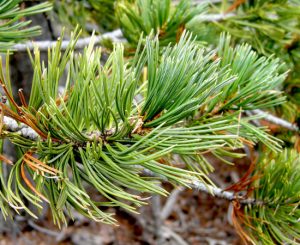Limber Pine
The very durable Limber Pine is a species of high-elevation, evergreen coniferous trees typically found in the mountainous regions of the Western US, Canada, and Mexico. These trees have an initial pyramidal structure but at maturity, their crown becomes more rounded, while those limber pines growing in high alpine sites are relatively shorter with a shrubby and twisted form.
Scientific Classification
| Kingdom | Plantae |
| Division | Pinophyta |
| Class | Pinopsida |
| Order | Pinales |
| Family | Pinaceae |
| Genus | Pinus |
| Subgenus | Strobus |
| Scientific Name | Pinus flexilis |
Quick Information
| Other Names | Limbertwig, pino (in Spanish), pin blanc de l’ouest (in French), Rocky Mountain pine |
| Other Related Species | Pinus albicaulis (Whitebark pine), Pinus monticola (Western white pine) |
| Size | 10-25 m (33-82 ft) tall, trunk diameter of 60-200 cm |
| Leaves | Occur in groups of five needles, clustered at the tip of the twigs, 3-9 cm long, dark green or bluish green, rows of white stomatal lines cover the entire length, persist 5-6 years |
| Cones | Large, cylindrical; 8-20 cm long, yellowish-brown, thickened and sticky scales at the tip; nut-like, wingless seeds |
| Bark | Nearly smooth, light gray turning into dark brown, ridges and scaly plates developing with age; twigs are smooth, stout, and flexible, silvery white to grayish |
| Distribution/Range | Rocky Mountains, Alberta, British Columbia (in Canada); New Mexico, Texas, SE California, Northern Arizona, Nevada, Utah (in the US); isolated localities in Coahuila, Chihuahua, Sonora, and Nuevo Leon (in Mexico) |
| Hardiness Zones | 4-7 |
| Growth Rate | Slow |
| Lifespan | Long-lived species, some trees live for over 1000 years |
| Growing Conditions | Winter Conditions: Grows in regions with very cold and dry winters, tolerates rapid temperature fluctuations
Summer Conditions: Warm and slightly humid summers as found in places with Continental and Pacific maritime climates Rain: Low to moderate amount of precipitation, especially during its growing season Sunlight: Partial or full sun Soil Requirements: Sand, loam, alkaline, clay, acidic, well-drained, moist |
| Problems/Diseases/Pests | Butt rot, red-brown butt rot, red ring rot, brown cubical rot; white-pine blister rust, lodgepole-pine dwarf mistletoe, limber-pine dwarf mistletoe, and Douglas-fir dwarf mistletoe; insects such as budworm, cone moth, wooly aphid, and mountain pine beetle attack these trees |
| Flowering/Fruiting | Male strobili are formed during the spring, after which the female strobili emerge; pollen grains are shed during June-July, fertilization occurs in the spring/early summer, seeds are dispersed between September and October |
| Seed production | Every 2-4 years, seeds are borne from 20-40 years of age |
| Wildlife Value | Clark’s nutcrackers and red squirrels feed on limber pine seeds and cache them for future use; American black bears also raid these caches for pine “nuts”; the trees are used as nesting sites by mountain bluebirds, squirrels, and Northern Flickers |
| Cultivars |
|
| Uses | Vanderwolf Pine is used as an ornamental tree in gardening; southwestern white pine in landscaping; makes a good Christmas tree |
| Identification | Some isolated populations are found at lower elevations, its large woody cones open when dry; its long needles do not have resin dots |
| IUCN Conservation Status | Least Concern |
Interesting Facts
- The oldest known limber pine tree, found in Eagle Cap Wilderness in the US state of Oregon, is believed to be more than 2000 years old. Another limber pine named “Twister” in the Alta Ski Area, Utah, is more than 1700 years old.
- These trees are highly adaptable to harsh conditions and are tolerant to drought. Some horticulturists believe that the limber pine can grow under unfavorable cultural conditions including compacted clay soil.
- The limber pine’s scientific name, as well as the common name, refers to its flexible wood and twigs, a great adaptation that helps in dealing with heavy ice and snowpack.
References:
- https://en.wikipedia.org/wiki/Pinus_flexilis
- https://extension.usu.edu/rangeplants/shrubs-and-trees/limber-pine
- https://www.for.gov.bc.ca/hfd/library/documents/treebook/limberpine.htm
- https://www.iucnredlist.org/species/42363/2975338
- https://extension.usu.edu/rangeplants/shrubs-and-trees/limber-pine


